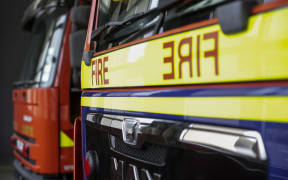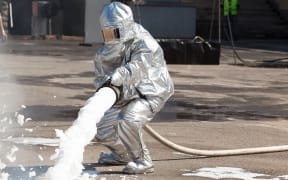Only one fire station site out of 660 nationwide has rung alarm bells for firefighting foam contamination.

Photo: 123RF
That's the result of an eight-month-long desktop study by Fire and Emergency as part of nationwide investigations into exposure to longlasting and toxic PFAS chemicals.
Only the Woolston Fire Training Centre in Christchurch rated sufficiently poorly to warrant a second phase of investigation.
However, Fenz will also take another look at seven other sites that rated slightly better than Woolston - Feilding, Napier, Hastings Training Centre, Silverdale, Masterton, Dunedin and Timaru.
"During the course of our assessment work, we did not identify any sites that indicated a need for urgent investigation," Fenz said in a statement.
No actual lab testing was done, and while experts will now visit the eight sites over the next four months in a second phase of inquiry, no water or soil testing will take place unless a third phase is ajudged to be required.
The Professional Firefighters' Union is "not convinced yet of the veracity of that analysis and those processes", said national secretary Wattie Watson.
"It's greatly reliant on historical information and dependent on who you speak to. Fenz is working with us, giving us more information. Our view is, why not test?"
Fenz's national urban commander Paul McGill said the desktop study by consultants was very thorough including use of aerial photos, and considering topographical and hydrographical information.
"We're explaining that it's not Fire and Emergency's process, it's a well-established international process, which is managed in New Zealand through the Ministry of the Environment," Mr McGill said.
The results of the current Woolston work would determine if a third stage with detailed site investigation including sampling as needed.
Most of the contamination by the PFAS and PFOA chemicals now banned in firefighting foam, has so far been detected around Defence Force bases; in the case of Ohakea, it has migrated several kilometres in groundwater.
This pointed up the need for testing actual samples, said Ms Watson.
"So we know from our international experience that in actual fact there has been widespread issues for community - soil, water, , fisheries and also anything grown in the land - and the magnification of the toxicity of PFAS as it goes through the food chain," she said.
As for blood testing for firefighters, Fenz said it was now moving to make that available for free if staff wanted a test.
Previously, the organisation had stuck with Health Ministry advice against blood testing, on the basis that detecting high levels of PFAS in someone's blood does not prove how it got there, and does not help with diagnosis as any links to health problems remain somewhat inconclusive.
"We're not in a position to challenge Ministry of Health advice but if we've got members who are concerned, then we think we can go a step further to address those concerns," Mr McGill said.
"So we're open to blood testing and just working through the detail of how that could be managed."
The union said that was "brilliant" and now it was a matter of identifying a credible lab to do the tests.
Firefighting foams currently in use still often contain some types of the PFAS compounds. But Fenz has stopped using those in training, and said it was working on sourcing fluorine-free foams, and working with the Environmental Protection Authority on tightening up the rules around PFASs in the Firefighting Chemicals Group Standard.




